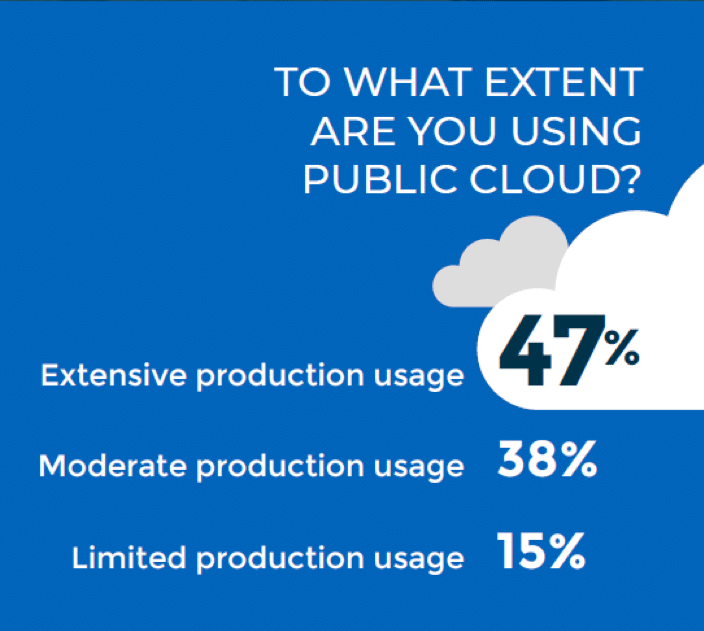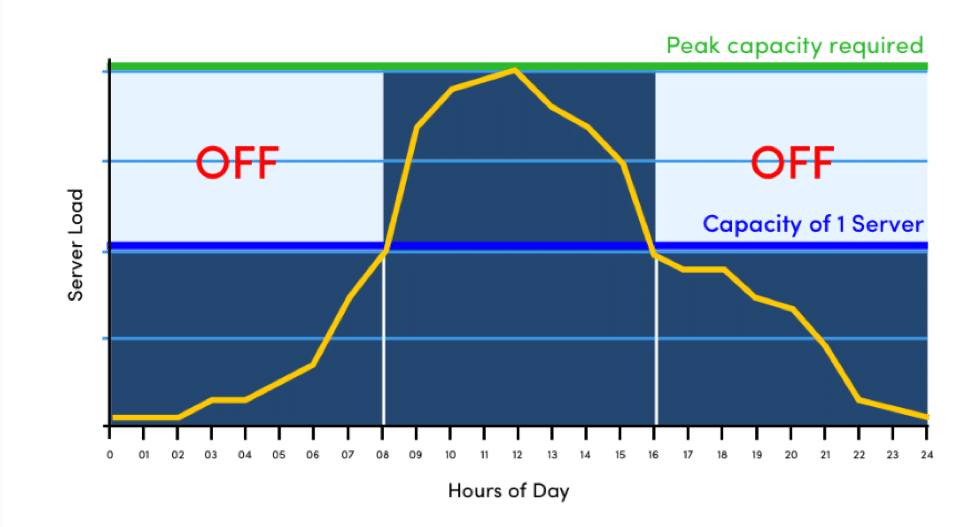Do Cloud Costs Have to be Sky High?Optimizing Cloud Costs and Reducing Bills
Cloud computing can refer to everything from basic everyday usage of online email services like Gmail or Yahoo to more complex business applications. Businesses choose different varieties of cloud services, from Software-as-a-Service (SaaS) like Salesforce or MS Office 365 to Infrastructure-as-a-Service (IaaS) like Amazon Web Services (AWS), Microsoft, Google, and Rackspace. These services convert fixed costs to changeable costs, which means that it’s easier to plan ahead and allows minute-by-minute flexibility. It’s no surprise that more than 85% of IT decision-makers say they use the cloud, with almost 50% citing an extensive production of their business using the public cloud¹ in a 2019 survey conducted by NetEnrich.
Reading Time: 4 minutes
Don’t miss out the latestCommencis Thoughts and News.
06/11/2019
Reading Time: 4 minutes
Cloud computing can refer to everything from basic everyday usage of online email services like Gmail or Yahoo to more complex business applications. Businesses choose different varieties of cloud services, from Software-as-a-Service (SaaS) like Salesforce or MS Office 365 to Infrastructure-as-a-Service (IaaS) like Amazon Web Services (AWS), Microsoft, Google, and Rackspace. These services convert fixed costs to changeable costs, which means that it’s easier to plan ahead and allows minute-by-minute flexibility. It’s no surprise that more than 85% of IT decision-makers say they use the cloud, with almost 50% citing an extensive production of their business using the public cloud¹ in a 2019 survey conducted by NetEnrich.
Don’t miss out the latestCommencis Thoughts and News.

But cloud costs can be legitimately expensive. In the same NetEnrich survey, almost 60% of decision-makers cited cloud costs as their primary concern, and not for nothing. There are practically countless stories of companies whose cloud costs either ruined them or brought them to the brink.
As is often pointed out, some of these problems arise simply due to the expectation that the cloud comes with significantly lower or fewer costs. And it does! But just because it’s cheaper doesn’t mean it’s free. There are, still, a number of clever tricks you can use to keep your cloud costs down. As the cloud is a comparatively new technology, most businesses have only recently switched. This means that, in all likelihood, they aren’t using the cloud in the most efficient manner, whether it’s due to using multiple cloud providers, lack of integration, or a number of other potential factors.
In this article, we’ll detail ways you or a cloud management platform can reduce your bills by optimizing your cloud costs.

1. Rightsizing and Scalability
Rightsizing simply means that every part of the infrastructure you’re using is working under conditions of maximum efficiency, so that waste – and cost – are kept to a minimum.
When you allocate more resources than necessary, that means the server is running more than it needs and costing more as well. Rightsizing reports take performance analysis data and can recommend specific ways to change or modify resource allocation. For example, maybe one of your virtual machines isn’t working properly – a rightsizing report would notice this and ensure that you allocate the resources necessary.
Another important way to rightsize is to check out the when average and peak resource consumption takes place, and this allows you to configure your workload and save money that way as well. For example, it’s common for CPU usage to be highest during the day, say between the hours of 11 and 3 pm. But outside of peak hours, you can downsize the workload based on the thresholds that make the most sense for your business.
In fact, this ability to scale your cloud requests is one of the largest advantages to using the cloud. Scaling up when demand is at its highest and scaling down when demand drops allows you to save money as you plot your workflows.
2. Turning off Unused Instances
While this may seem like an easy solution, Globaldots estimates that it can help save up to 70% of runtime costs².

Shutting down overnight and on weekends for most environments with planned scheduled shutdowns is critical to saving on costs.
The image³ shows how the server load can easily be handled by one server outside of peak hours, which means you should plan accordingly.
3. Make Use of Discounts
Often times you get significant discounts by committing to long term deals with cloud providers. In the case of AWS Reserved Instances, the longer you commit, the larger the discount⁴, with discounts up to 75% off on offer. By monitoring the data and analytics, you can gauge which purchase makes the most sense for your business to give you the best ROI.
Amazon EC2 Spot Instances represent another such possibility, which allow you to use up unused EC2 capacity in the AWS cloud for up to a 90% discount compared with regular On-Demand prices. Needless to say, this allows you to lower your Amazon EC2 costs by a significant degree.

4. Manage your storage lifecycle
Your storage has a natural lifecycle that needs to be managed by rotating logs and snapshots on a regular basis. This includes being quick to remove any storage volumes which you might no longer be using.
5. Compress Data Before Storage
Compressing data reduces the total amount that you’ll be storing. In essence taking a small amount of time to compress all that data can lead to large savings. Many cloud management platforms will have access to high speed compression algorithms to make this process even more efficient.
6. Use Functions as a Service (FaaS)
Function as a service (FaaS) is a new mode of cloud computing in which customers can develop, run, and manage applications without paying for individual servers – paying for functions instead (thus the name). This means that businesses can set each function to use the exact amount of resources necessary, keeping costs and waste to a minimum.
This is often referred to as serverless cloud computing, as it makes the way one uses the server more abstract (ie focusing on functions) and takes low-level infrastructure decisions away from developers. While the name can be misleading (yes, there are still servers), what it does is it allows applications to be developed without implementing, changing, or scaling a server itself.
7. Rinse and Repeat
Optimization requires constant vigilance and being on the ball 24/7. Constant data analysis to prevent waste is necessary, and when you think you’ve finally got everything down – that’s the time to worry most. Optimization is a process that never ends.
Key Takeaways
It can be quite expensive to manage cloud operations, and it’s important to know this going in. And, just as it’s important to know that from the beginning, it’s equally important to know how to optimize your resources and keep costs to a minimum. When costs are kept down and your business is running efficiently, that not only affects your bottom line, but also the efficiency with which every part of your business operates.
Related Articles
Nothing found.

